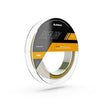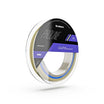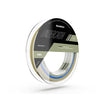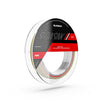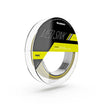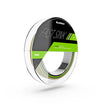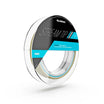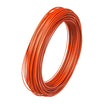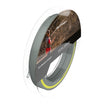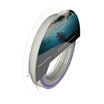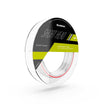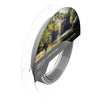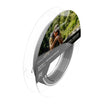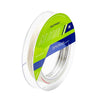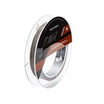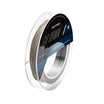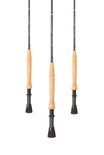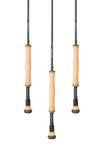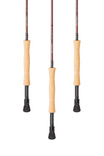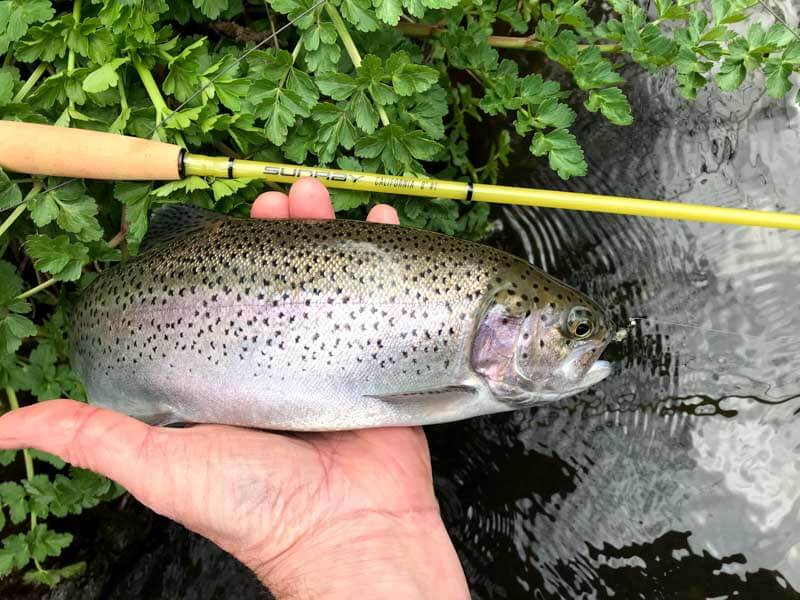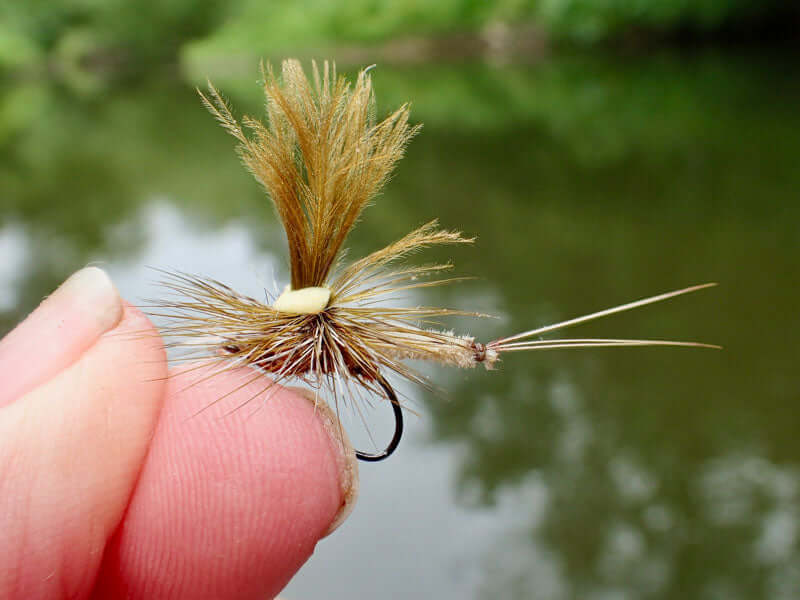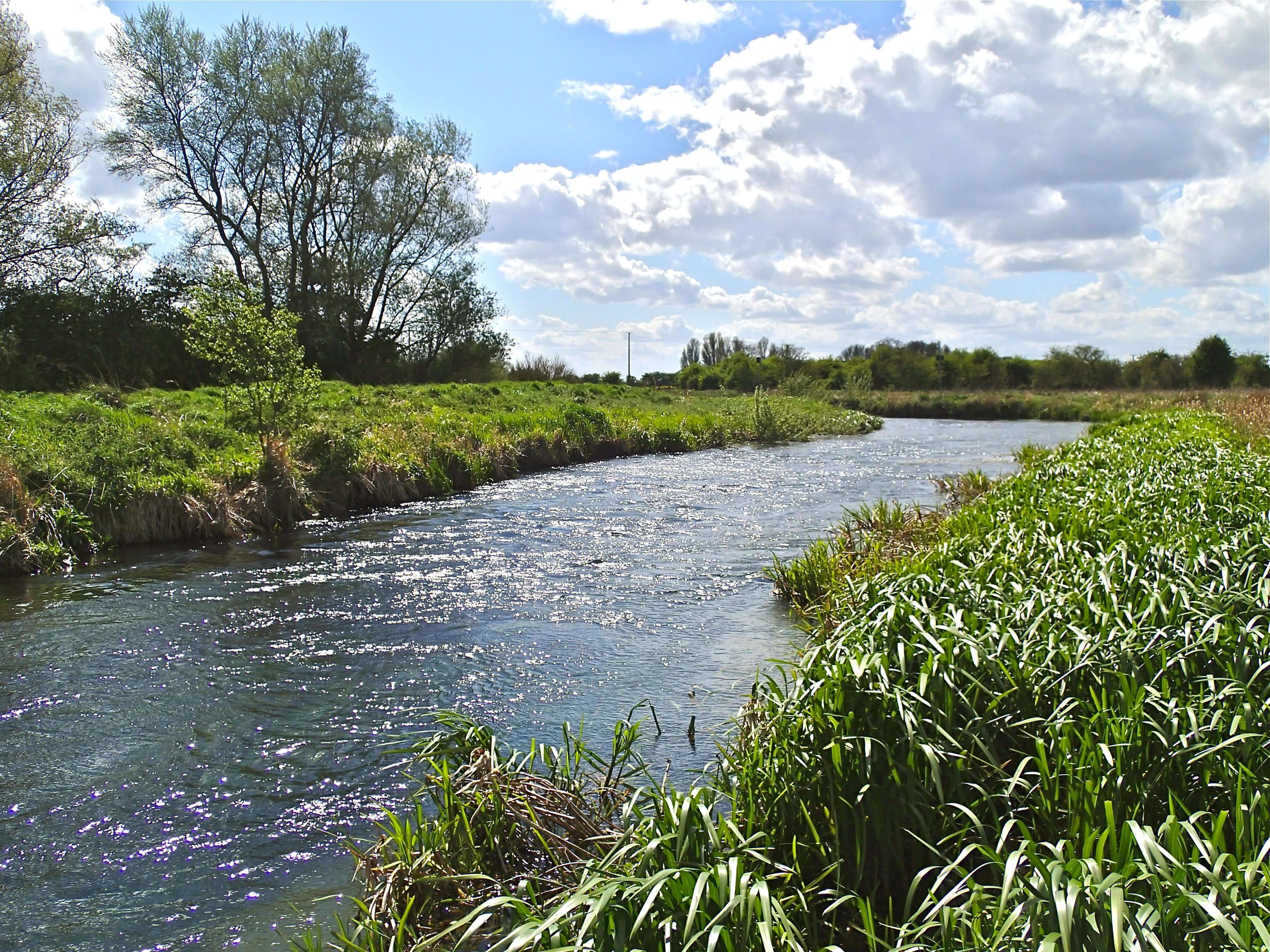THE NEXT STEPS OF DINOSAURS
by Jeremy Lucas
The place that fly fishing occupies in my life is impossible to describe; deeply personal, as it is for any one of us. It has become somewhere I go, on waters I love so much, where I can do exactly what I want to do, without hindrance from anyone, or dogma, but rather where I can take experiences from so many years with a fly rod to the next level. I have always been fascinated by instinctive fishing, rather than mechanical technique, while always supported by experience. I have enjoyed the evolution of tackle in our sport and frankly endured the severely limiting nature of some of it over the years. We are so lucky nowadays, because the tackle is supremely good; so much so that there is little that is genuinely new, or significantly more advanced.
Development is very much incremental, in spite of the hyperbole and marketing. Tiny little steps is almost all there is. Almost. Just occasionally in a fishing life, one finds something that holds the attention, something that is so fresh and illuminating. I’ve known a few of these.
Grafham, Arthur Cove and those immensely long leaders, swinging nymphs from the bank… Like Arthur, I had Don Neish’s Grafham Ghost, a magnificent 9’ 9” glass fibre rod, designed for purpose from a coarse, match fishing blank. I was lucky with this, but I also made do, as did everyone else, with the industry best line at the time - the Scientific Anglers double taper floater, a five weight. This was loaded on a Hardy Marquis #7; I remember, because I still have the reel. I wish I still had the Ghost, not that I would fish it unless for nostalgia. I mean, I took this rod everywhere with me, even out on Loch Maree during the dying years of the great sea-trout fishery, and beyond to the outer isles and the Faroes. But the lines were dreadful, really, cracking up within half a season, and not really very forgiving of even a reasonable casting style. I recall Don Neish describing Arthur’s casting as being little better than that of a crippled cow - but acrually Arthur was a very good’ practical caster, merely opening up the loop so as to give him a reasonable turnover at range with the set-up he was pioneering, and overcoming the limitations of the line. I still use the flies too - the black spider, the sedge pupa, and of course the classic Cove PTN. I’ve adapted the PTN a bit, not that it needs it. Just my little nuance and indulgence.
Now, there’s a gulf, during which - well, that’s a book.

Until, the Sunray micro-thin presentation lines made an enormous impact on our fishing, and river fly fishing everywhere. I’ll tell the story of how these were developed one day; but that is not the point here. They were developed, and they changed our sport dramatically. They also changed the fly fishing industry. They gave us a way of fishing dry fly with a presentation that was better than could be achieved with either ‘conventional’ fly line or leader-only technique, at range. They gave us fabulous presentation of a dry fly or duo, or even nymph, with or without an indicator section. They did not, quite, make leader fishing with nymph obsolete, though most of us can get by just fine with this approach using a presentation line and not really feeling the need for a leader. Actually, I haven’t fished a leader for over two years. I almost miss them.
Like I missed glass fibre, until Wojtek gave me an S-glass 6’ #2 , and then Tom put a California 8’ #1 my way… On small streams, overgrown and inaccessible, the California gives a solution. A lot of the waters I fish, and want to fish whenever I’m allowed to return to France, need a rod like this. Soft, so you seldom lose a fish, and short, loaded with a light line to fish at close quarters. Such intimate sport, formerly the domain of the lightest line-rated split cane rods. I haunt the Kentish streams with this rod, and put dry fly and nymph over all the species here, in tunnels of trees, longing for a rare opening, doing my utmost to avoid spooking the fish upstream before I can put in a cast to them. Dace, chub, roach, grayling - or wonderful wild trout. All compromised, improvised casts. I dream of a nice smooth overhead, but what I get is a manufactured presentation, and it sometimes works; made possible with this extraordinary rod, loaded with the presentation line.

I have been fishing our club lake quite a lot. Through the winter for the resident trout, and well into the spring with the mounting fly hatches. The banks are festooned with hawthorn, willow and hazel so there are perhaps only six places where you can cast here, and this is made more difficult by reed beds and, lately, thick growths of blanket weed. Even the stocked fish wise up very quickly. Give them two or three weeks and you could not tell them apart from wild fish. The stock rate is low and you marvel at how the survivors adapt to their home, learning to feed, learning to avoid danger. Thick, bright fly lines immediately narrow your prospects. You can watch fish on a cruising patrol, obviously spook as they approach the line, rising again twenty metres the other side. A three weight JL presentation line has worked well, virtually invisible to the fish, although it has not been ideal at long range. Given the restricted casting positions, you need to load the rod quickly and shoot a long line. This is where the Sunray Clear floater comes in. Oh my days, how I would have loved this line in those formative years on the banks of Grafham and the other big reservoirs. Arthur would have loved it too, loading the Ghost. Lift off, one false cast and shoot. It’s there, on the surface, invisible in the ripple, even a flat calm. And then, a figure of eight bunched retrieve of 15 metres, without dropping a loop onto the ground, shooting it all from hand on the next cast, again to lay smooth and straight, no memory, no kinks.
I don’t know if all these things are more than incremental improvements on what we had before. Probably not, but they are, for sure, instrumental in shifting just how effective we are in more closely engaging the best that the sport can offer. If not paradigm shifting themselves, the lines do at least allow us to explore with less restraint, and this, finally, makes us better at what we do.
It’s about removing variables, uncertainties, mediocrity. You don’t want to be thinking about whether or not your line is the right one for the task, or the fly selection, or the tippet, or anything really. In order to challenge the opportunities, you cannot be challenged by uncertainties in the tackle and fly. Finally, a look at the water, in the moment, and all should be clear, given the experience. And this, really is the best of it. You are not thinking about limitations, about what would be possible, if only.

The tackle of today sweeps that all away, and if you don’t allow yourself then to drown in the mysteries, and nonsense, of fly design, and rather rely on what really elicits a natural reaction from the fish - ok, another book - then that is all there is. Right now, I’m so happy to have the new generation of fly lines, which above all, even fly design, has changed everything and pushed us to the next level.



